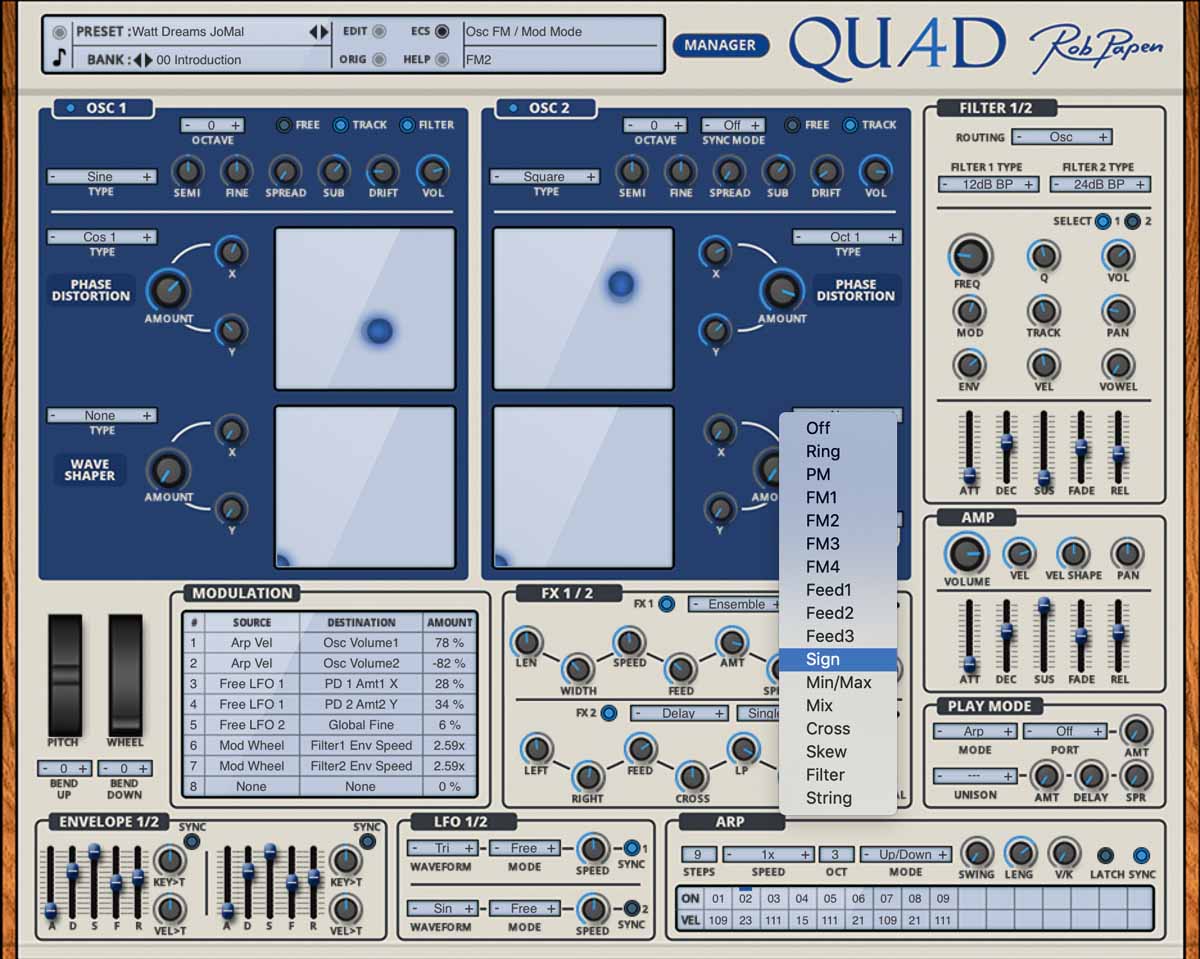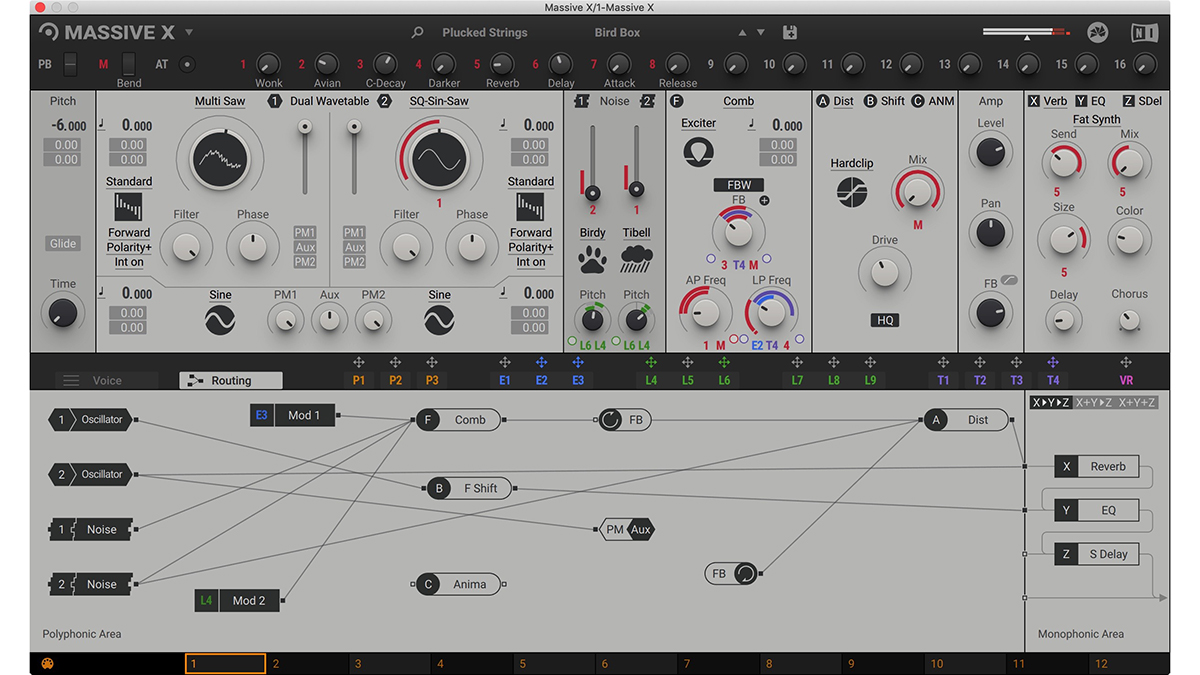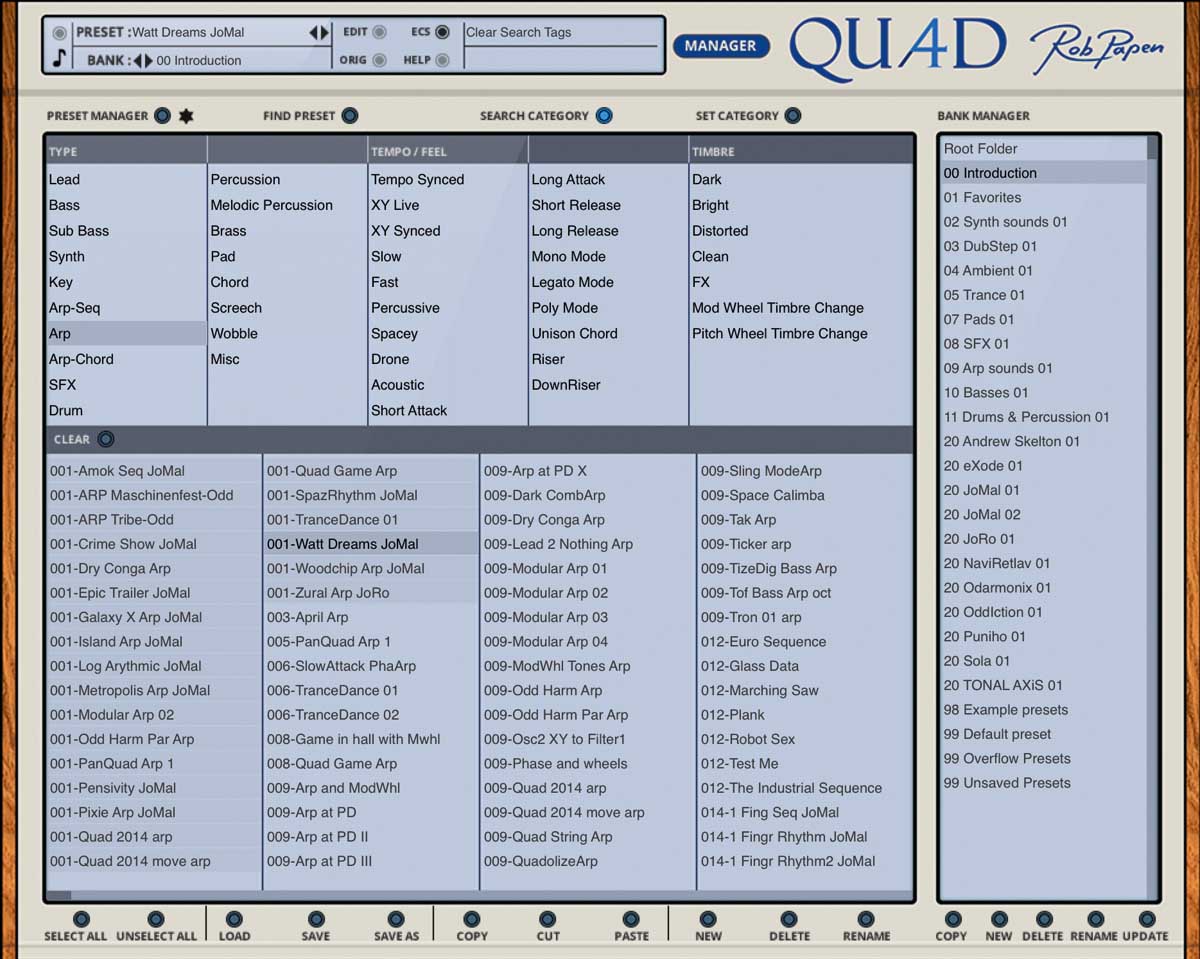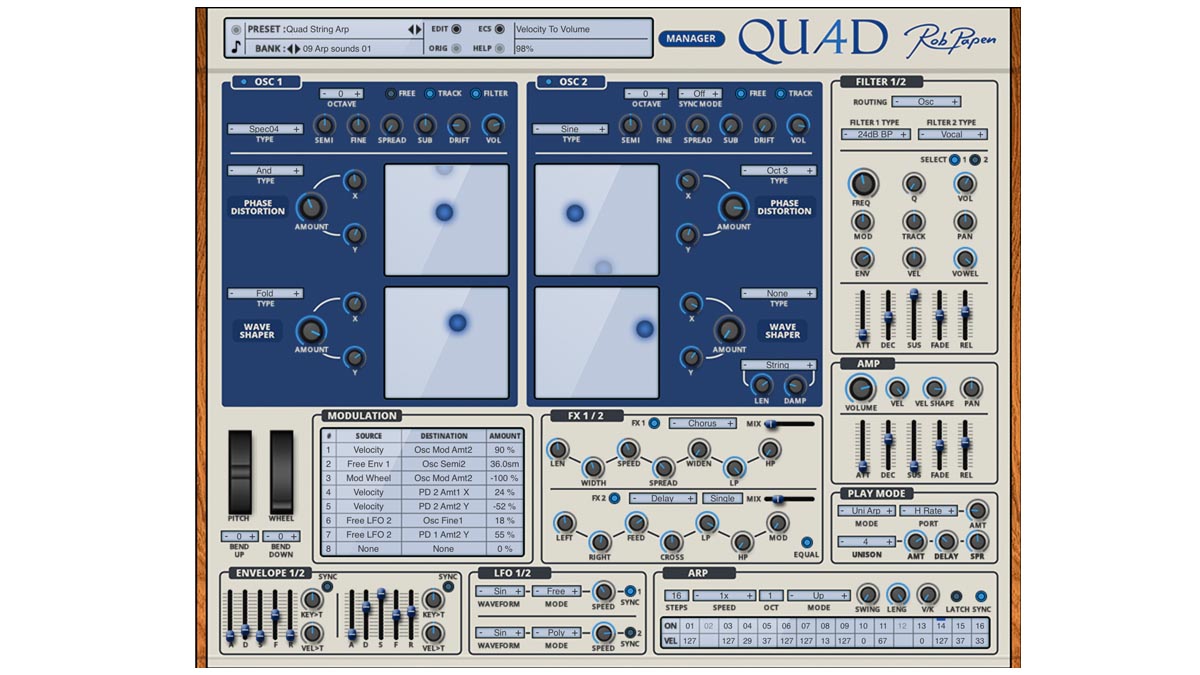MusicRadar Verdict
Quad’s reappearance as a plugin instrument brings this creative yet intuitive synth design to a much wider audience.
Pros
- +
Flexible core sound generation.
- +
Easy to use XY pad configuration.
- +
Modulation matrix with an extensive range of options.
- +
Oscillator cross-modulation options.
- +
Many and varied presets.
- +
Easy to use single window interface.
Cons
- -
Some features such as effects and arpeggiator are quite basic.
MusicRadar's got your back
What is it?
Quad was originally designed as a rack extension instrument for Propellerhead Reason and has now been relaunched for VST, AU and AAX users.
Like many Rob Papen synths, most of the functionality is found in one jam packed window, and it’s fair to say this contributes to a functional rather than designer layout.
However, if you’ve used Rob Papen synths before you’ll appreciate that the directness and efficiency are accompanied by incredible depth of features, a plethora of presets and an awesome sound that you’ll keep coming back to.
Quad Core
Quad features two core oscillators each with their own sub oscillator and 4 XY pads – two per oscillator. This four-fold ‘quad’ arrangement dominates the interface, forming the backbone of the synth.
It works as follows: each oscillator can choose from 128 analogue modelled, additive and spectral waves with tuning, detuned Spread and analogue Drift. The sub oscillators are fixed at one octave below and can be either sine or square wave and oscillator 2 can be synced to oscillator 1.
Further interaction is available between the oscillators. However, the big ticket feature and the one that dominates the interface, is the XY pad system and these provide phase distortion and wave shaper distortion for each oscillator. The phase distortion influences how the oscillator is actually generated; meanwhile the wave shaper provides further manipulation of that waveform.
The big ticket feature and the one that dominates the interface, is the XY pad system
Each process has 21 different distortion types and each of these has two adjustable parameters, which are assigned to the X and Y axes.
Want all the hottest music and gear news, reviews, deals, features and more, direct to your inbox? Sign up here.
So, you have incredible power to manipulate the sound of each oscillator at the most fundamental level and starting with a sine wave we quickly created a harmonically rich oscillator simply by selecting distortion types and manipulating the XY pads.
Factor in the 21 distortion types and 128 core oscillators and the potential for tone creation is immense. However, where things get really interesting is when we add in modulation, as each axis can be modulated via the 8-slot modulation matrix using either onboard sources (LFOs, envelopes and so on) or via MIDI CCs.
A cursory delve into this revealed we could quickly conjure up some very dynamic sounds.

Performance and Verdict
Quad is supported by a full gamut of synth extras. There are two analogue modelled filters with serial, parallel and single oscillator split routing. Each filter gets its own envelope and the choice of filter types is extensive. For sound design we particularly liked the comb filters and vocal style filters (Vocal, Form2 and Form4).
There are two effects engines. FX1 handles modulation: you choose one from chorus, ensemble, phaser, flanger and widener. FX2 handles reverb and delay and you can opt to use both together in series if you wish.
At the bottom of the interface you’ll find two freely assignable envelopes and two free LFOs. All can be tempo synced and the envelopes include adjustable velocity and pitch modifiers. As mentioned there’s an 8-slot modulation matrix, and we counted 25 internal sources and well over 100 targets including all of the FX1 and FX2 parameters.

• Native Instruments Massive
If dubstep’s your thing, Massive conjures suitable sounds with ease.
• Plugin Boutique Virtual CZ
For retro phase distortion synthesis this Casio emulation is great.
You can also use the matrix to assign MIDI controllers. Rounding things off is a global amplifier envelope, arpeggiator and playback mode (Poly, Mono, Legato and Arp). This last option includes various unison settings, a quick route for fattening up your sounds.
Sounds
So, what does all this mean for the sounds? As noted, we found turning a basic waveform into something more interesting was quick and simple. However, Rob Papen synths usually deliver big time on the presets, and Quad is no different with more than 750 to choose from.
Patches can be loaded either via the Bank and Preset menus in the top left, or via the Manager page, and include both a core categorised set and further artist contributions.
Within the library, pads are particularly well represented, with evolving sounds (Harsh Planet and Quad Sweep) joining traditional rich sounds (Like Jupiter Pad 01) and more unusual ones (Submerged Space). There are also some pretty edgy sounds such as Twin Rain 1 and 2 (which use pulse modulation of Osc1 by Osc2) and also some biting leads (Uni Q-Syntho and RP Quad Lead).

Modulating the XY pads can create very dynamic outcomes and this is great for tempo synced dubstep sounds. Quad includes 35 very playable dubstep presets, many of which patch tempo to the pitchwheel and timbre (via the XY pads) to the modwheel. Quad also has some great arpeggiator patches such as the Kraftwerkesque Chord & PitchWheel.
The synth’s sound really lends itself to short precise arps. That said, the arpeggiator is a bit basic compared to some RP synths. Furthermore, although there were a few basses we really liked (MidTone Bass and Tof Bass for example), we couldn’t get quite enough attack for a really thumping bass.
Overall, Quad is a sonically interesting design and though not quite a one-stop synth, it covers a lot of ground. It would benefit from a better arpeggiator, additional onboard processing, and more extras such as chord memory mode, but as a whole it’s easy to program and delivers many awesome sounds.
MusicRadar verdict: Quad’s reappearance as a plugin instrument brings this creative yet intuitive synth design to a much wider audience.
The web says...
"Quad has much to offer prospective user. For pad-like colours, it’s especially strong, capable of sounding ethereal and menacing while adding glorious movement to your sounds. Adding effects into the equation merely thickens the potion, while the programmable elements within the oscillator section can give your tones sweet and gnarly flavours within seconds."
MusicTech
Hands-on demos
Simon Le Grec – Official Producer Channel
Rob Papen
Specifications
- Type: Synth plugin
- Key Features: Two oscillators, Four X/Y pads for modulation, 16 voice synthesizer, Unique Phase Distortion and Waveshaper tools, Two in-built FX slots w/ multiple effects, 830+ professionally designed presets
- Compatibility: VST/AU/AAX
- Contact: Rob Papen
Computer Music magazine is the world’s best selling publication dedicated solely to making great music with your Mac or PC computer. Each issue it brings its lucky readers the best in cutting-edge tutorials, need-to-know, expert software reviews and even all the tools you actually need to make great music today, courtesy of our legendary CM Plugin Suite.

